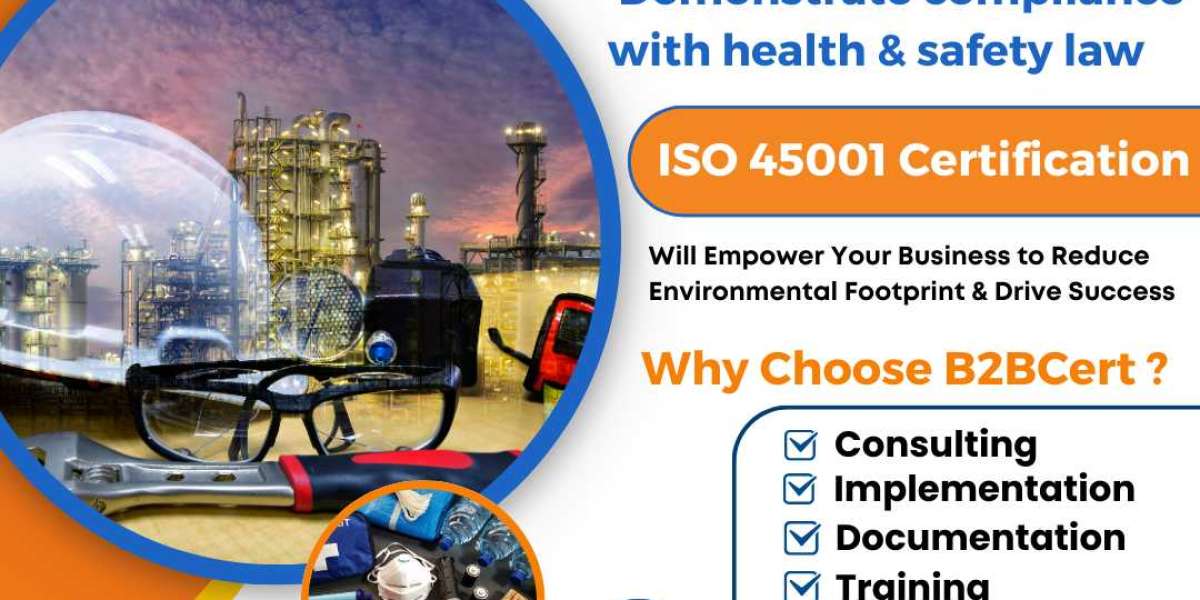ISO 45001 is the globally recognized standard for Occupational Health and Safety Management Systems (OHSMS). ISO 45001 Certification in Bangalore provides a structured framework that helps organizations create safer workplaces, reduce occupational hazards, and promote employee well-being. Among its many guidelines and processes, one key principle stands out – the proactive prevention of workplace injuries and illnesses through a risk-based, worker-centered approach .
In essence, ISO 45001 emphasizes that prevention is better than cure . Rather than reacting to incidents after they happen, the standard urges organizations to identify potential hazards, assess risks, and implement measures that eliminate or control them before harm occurs. This principle fundamentally shifts workplace safety from a compliance-driven checklist to a continuous improvement culture.
Understanding the Key Principle – Proactive Risk Prevention
The main focus of ISO 45001 is proactive risk prevention , which means organizations must actively seek out and address hazards before they lead to accidents, injuries, or health issues. This involves:
Hazard Identification – Observing, analyzing, and recording anything in the workplace that could potentially cause harm.
Risk Assessment – Evaluating the likelihood and severity of harm that could result from each hazard.
Control Measures – Implementing strategies to eliminate hazards or reduce risks to acceptable levels.
Continuous Monitoring – Regularly reviewing and updating safety protocols to adapt to changing conditions.
By applying this principle, businesses can reduce downtime, improve productivity, and foster a safer, more engaged workforce.
Why This Principle Matters
Workplace accidents not only harm employees but also disrupt operations, damage a company's reputation, and result in legal or financial consequences. According to global labor statistics, millions of workers suffer from workplace-related injuries every year—most of which are preventable.
The proactive prevention principle in ISO 45001 ensures that organizations:
Prioritize worker safety over reactive measures.
Build a culture of shared responsibility for occupational health.
Integrate safety considerations into every business decision.
How ISO 45001 Embeds This Principle
The standard incorporates proactive prevention into its framework through the Plan-Do-Check-Act (PDCA) cycle:
Plan – Identify hazards, assess risks, and set objectives for health and safety improvement.
Do – Implement risk control measures and operational processes that promote safety.
Check – Monitor and measure performance against objectives and legal requirements.
Act – Take corrective and preventive actions to ensure continuous improvement.
This systematic approach ensures that safety management becomes an integral part of day-to-day operations rather than an occasional compliance exercise.
Role of Leadership in Applying the Key Principle
ISO 45001 places strong emphasis on leadership commitment. Top management is responsible for:
Establishing a clear occupational health and safety policy.
Allocating resources for hazard identification and control.
Encouraging worker participation in safety initiatives.
Leading by example in adhering to safety protocols.
Leaders must create an open environment where employees feel safe reporting hazards and suggesting improvements without fear of reprisal.
Worker Participation – A Critical Element
Proactive prevention is most effective when employees actively participate . ISO 45001 requires organizations to involve workers at every stage—from hazard identification to solution implementation. Workers often have first-hand insights into safety risks, making their input invaluable.
Some ways to encourage worker participation include:
Safety committees and regular meetings.
Anonymous hazard reporting channels.
Safety training programs tailored to job-specific risks.
Benefits of Implementing the Key Principle
Organizations that adopt the proactive prevention approach outlined in ISO 45001 experience:
Fewer Incidents and Injuries – A safer environment means reduced accident rates.
Improved Employee Morale – Workers feel valued and protected.
Regulatory Compliance – Meeting or exceeding occupational safety laws and regulations.
Enhanced Reputation – Safety-conscious organizations attract clients, investors, and talent.
Cost Savings – Fewer accidents mean less downtime, lower insurance costs, and reduced legal liabilities.
Getting Started with ISO 45001 in Bangalore
For businesses in Bangalore, implementing ISO 45001 can be a game-changer in creating a safer work culture. Partnering with ISO 45001 Consultants in Bangalore ensures that your organization gets expert guidance in hazard identification, risk control, and compliance with both ISO requirements and local labor laws.
ISO 45001 Certification in Bangalore not only demonstrates your commitment to occupational health and safety but also gives you a competitive edge in tenders, client partnerships, and employee retention. Certified organizations signal trustworthiness and professionalism to stakeholders.
Specialized ISO 45001 Services in Bangalore can help your business with:
Gap analysis and readiness assessments.
Training programs for management and employees.
Documentation and process implementation.
Internal audits and pre-certification evaluations.
Conclusion
The key principle emphasized by ISO 45001— proactive prevention of workplace injuries and illnesses —is more than just a regulatory requirement; It's a mindset shift. It moves organizations from reacting to incidents toward building a culture of foresight, responsibility, and continuous improvement.
For companies in Bangalore, adopting this principle through ISO 45001 Certification in Bangalore and leveraging the expertise of ISO 45001 Consultants in Bangalore is a smart investment. Professional ISO 45001 Services in Bangalore ensure your business is not only compliant but also positioned as a leader in workplace safety.
By embracing proactive prevention, you're not just meeting standards—you're protecting lives, enhancing productivity, and building a resilient, respected organization.



